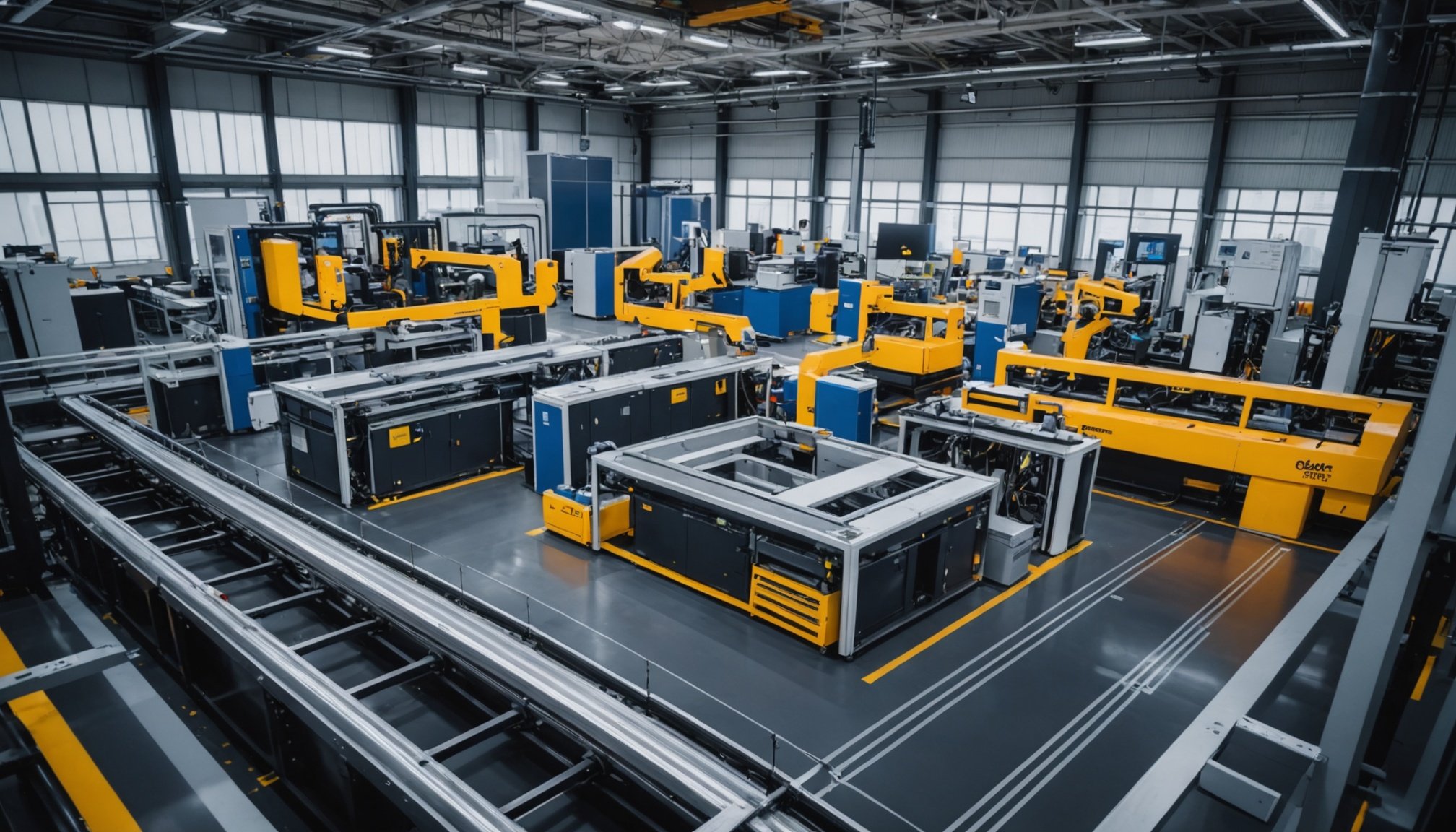Overview of Digital Twin Technology
Digital twin technology represents a revolutionary concept in modern engineering, offering a comprehensive digital replica of physical assets, systems, or processes. These digital models enable real-time data synchronization between the physical and digital worlds, enhancing understanding and decision-making capabilities. The core components of digital twin technology include data collection, modelling, and analysis, which are critical in creating accurate digital replicas and effective simulations.
Originating in advanced manufacturing sectors, the historical evolution of digital twins has progressed significantly, marking its viability across diverse fields. In the UK, the adoption of this technology is growing with increasing interest from industries seeking to improve product development innovation. The use of digital twins in product development is proving significant, as it allows for more efficient testing, design, and iteration processes.
In parallel : Enhancing UK Hospitality Loyalty: Innovative Data-Driven Techniques for Winning Customer Trust
By continually monitoring the real-world performance of assets, digital twins enable businesses to tweak designs and processes virtually before implementing physical changes. This proactive approach reduces the risk of errors and optimizes resources, thereby streamlining the entire product development lifecycle. Digital twin technology, thus, holds substantial potential to revolutionize traditional development paradigms in the UK.
Practical Applications of Digital Twins in UK Industries
Digital twin technology is making waves across various UK industries, offering transformative potential. Manufacturing, a pivotal sector, sees significant enhancements in operational efficiency and product quality through digital twins. By simulating production processes, manufacturers can identify bottlenecks, enhance workflows, and predict maintenance needs, saving time and resources.
In the same genre : Unlocking IT Success in the UK: The Ultimate Agile Methodologies Guide for Project Management Mastery
The healthcare industry is also leveraging digital twins for remarkable advancements. In hospitals, digital replicas of medical devices and systems aid in predictive maintenance, ensuring uninterrupted critical equipment functionality. Moreover, patient-specific digital twins allow for personalized treatment plans, potentially improving health outcomes and reducing hospital stays.
The automotive sector benefits substantially from digital twin applications. Automotive companies use these technologies to streamline vehicle design and testing processes. They simulate real-world conditions, helping engineers refine vehicle performance and safety features with higher precision.
Successful case studies from the UK highlight the adaptability of digital twin technology in addressing industry-specific challenges. For instance, a leading automotive firm reported a 30% reduction in prototyping costs due to effective simulation models. Such cases illustrate the practical viability of digital twins, providing valuable lessons and best practices other businesses can adopt to optimize their operations.
Benefits of Digital Twins for Product Development
Digital twin technology offers significant benefits for enhancing product development efficiency and innovation enhancement. A primary advantage is the improvement in product design and testing accuracy. By creating virtual replicas, teams can analyse every aspect of an asset, ensuring precision in design. These simulations allow for extensive testing under various conditions without physical prototypes, reducing both time and financial expenditure.
Furthermore, digital twins facilitate cost reduction and resource optimization. By simulating processes, companies can identify inefficiencies and predict future challenges. This proactive approach minimises the risk of costly errors, streamlining operations and conserving resources. Such predictive capabilities translate to substantial savings, providing a competitive edge in the market.
Another crucial aspect is the enhancement of collaboration and communication among teams. With a comprehensive digital overview of products and processes, all team members can access the same information, fostering a unified approach to development. This transparency boosts teamwork, enabling faster problem-solving and more innovative solutions. By embracing digital twins, organisations not only enhance their product development but also ensure that their teams work cohesively, driving greater innovation and efficiency.
Potential Challenges in Adopting Digital Twins
The implementation of digital twin technology is not without its hurdles. Common challenges businesses face include the high initial investment costs and technical barriers in integrating digital twins with existing systems. Companies may struggle with the complexity of data management and the expertise required to operate these advanced systems effectively.
Moreover, a significant barrier to adoption is the potential resistance to change within organizations. Employees accustomed to traditional methods might be hesitant or unprepared to adapt to digital transformation. Addressing this issue involves comprehensive training programs to ease the transition and ensure proficient usage of digital twin technology.
Risk mitigation strategies are crucial in overcoming these challenges. By conducting thorough risk assessments, businesses can identify and address potential obstacles before they escalate into larger issues. Developing realistic expectations and operational timelines also aids in managing the transition effectively. This strategic planning helps in aligning the goals of digital twin adoption with the company’s broader objectives.
Thus, while the path to incorporating digital twins may be fraught with obstacles, prudent risk management and stakeholder engagement can pave the way for successful integration and utilization.
Key Technologies Driving Digital Twin Innovation
A variety of enabling technologies underpin the advancement of digital twin innovation. The Internet of Things (IoT) plays a vital role in facilitating data collection and real-time monitoring. IoT sensors gather data from physical assets, transmitting this information to create accurate digital models. This connectivity allows for continuous synchronization between physical and digital realms, enhancing decision-making capabilities based on the current state of assets.
Artificial Intelligence (AI) is another cornerstone, crucial for performing predictive analytics and generating insights from the vast amounts of data collected. AI algorithms can identify patterns and predict potential issues before they escalate, offering significant value in proactive maintenance and optimization strategies.
Successfully integrating digital twins with existing systems and platforms is essential for their seamless operation. Robust integration ensures that digital twins can work harmoniously within established infrastructures, minimising disruptions and maximizing value. Organizations often utilize APIs and middleware to bridge communication between disparate systems, supporting cohesive data flows.
By harnessing these technologies, businesses can fully capitalize on the potential of digital twins, driving forward product development innovation and operational efficiency. As these technologies continue to evolve, the scope and impact of digital twins are set to expand, driving further innovation.
Stakeholder Involvement in Digital Twin Implementation
In the product development lifecycle, understanding the roles of key stakeholders is crucial for successful digital twin implementation. Stakeholders typically include engineers, IT specialists, business analysts, and end-users. Their engagement ensures that diverse perspectives are considered, enhancing the relevance and efficiency of digital twin solutions.
Effective collaboration strategies involve aligning the goals of different departments and encouraging open communication. Stakeholder meetings and cross-functional workshops can bridge gaps between technology and business objectives. This coordination fosters a unified approach, as various teams work towards a shared vision.
Training and support are fundamental for facilitating technical adoption. Comprehensive training programs help stakeholders adapt to new systems, reducing resistance to change. Providing resources, such as online tutorials and in-person sessions, equips team members with necessary skills, ensuring smooth integration of digital twins into everyday operations.
By focusing on collaborative implementation strategies, organizations can overcome potential hurdles and harness the full benefits of digital twin technology. This collective effort not only streamlines the adoption process but also promotes innovation, positioning stakeholders as active contributors to technological advancement.
Future Trends in Digital Twin Technology
As digital twin technology evolves, it opens new avenues for innovation and market expansion. Emerging trends highlight increased integration with artificial intelligence (AI) and machine learning for advanced analytics. This integration allows for deeper insights and anticipatory decision-making, helping companies achieve greater efficiency and predictive capabilities.
Increased connectivity is another trend, with advancements in 5G and edge computing enhancing data transfer speeds and reducing latency. This supports more dynamic and real-time applications, particularly in complex systems like urban infrastructure management and smart cities.
Looking ahead, there are predictions of digital twins becoming central to sustainability initiatives. By simulating environmental impacts and resource usage, organizations can innovate greener solutions and facilitate compliance with evolving regulations.
The market is also witnessing a shift towards collaborative platforms, where multiple stakeholders can work seamlessly across the globe. Such platforms foster innovation by enabling shared access to digital twins for iterative design and testing.
In the next decade, the scope and capabilities of digital twins are expected to expand, driven by technological advancements and changing business needs. Adapting to these trends will be crucial for organizations looking to maintain a competitive edge in increasingly digital landscapes.











